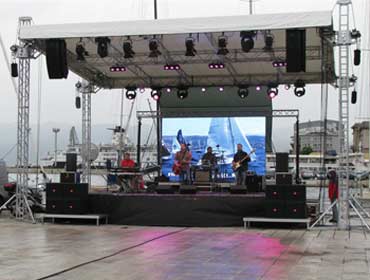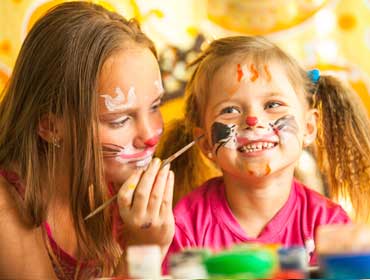 Fetes Fairs and Festivals
Fetes Fairs and Festivals
Amusement Ride Safety For Young Children
Children can safely enjoy amusement rides with close supervision, but parents must remember that the rides are powerful machines and the kids are just kids. Child safety standards for this industry are spotty at best. Parents need to take a pro-active role in protecting their own youngsters from dangerous situations.
- Most full-sized rides are designed with teens and adults in mind, even though many now have minimum height limits so low that kindergarteners are allowed to ride alone. Adult-sized safety features, such as restraints and bracing points, may not work as effectively for children because of their small size.
- Smaller kiddie rides may look tame to an adult, but they aren't required to have child-safe restraints and toddlers or preschoolers who fall or jump off can hurt themselves.
Parents should never fudge the minimum height limits
- Parents who fudge the minimum height limits -- by sneaking their kids past the measure, putting their child in platform shoes, or bullying the operator into letting their shorter child board a ride -- may be endangering their children. Many ride height limits have slipped far below what's safe for young children.
- Parents should consider add a healthy margin of safety on top of the posted height limit. Minimum height limits on U.S. amusement rides are set and changed at will by ride manufacturers. In recent years, market competition has pushed minimum height limits dangerously low. The vast majority of falls and ejections from amusement rides involve young children, most of whom met the minimum height limit posted at the ride.
Parents should choose rides with restraints that fit their child's body and can't be easily opened
- Amusement rides aren't like car seats, strollers, or shopping carts. There are no mandatory or voluntary standards that require amusement rides to securely contain child riders. The type and level of safety protection provided for children varies widely depending on the age and style of ride; the manufacturer; the company operating the ride; and the authority and culture of the regulating agency (if one exists).
- Restraints and bracing points provided for adults and teens in full-sized amusement rides are sometimes oversized or out of reach for smaller riders allowed on board. This is considered acceptable within some sectors of the industry and regulatory community, even though it puts children at higher risk for injury. Historically, the industry viewed child restraint as a parenting function, not a ride designer's function.
Parents should make sure their child can stay in a stable position for the whole ride
- Butt On the Seat - In general, sitting on a seat offers more stability for a young child than straddling a slippery carousel horse or lying prone on a flying ride. Children must keep their bottom planted for the whole ride, or they risk serious injury. If your child tends to have ants-in-the-pants, ride with him to make sure he stays put.
- Both Feet On the Floor - Some rides may leave small children's legs dangling. If a child's feet can't reach the floor, he won't be able to brace himself against the ride's motion. This is such an unconscious action for adults that it's easy to miss the import role foot bracing plays in keeping riders safely in place.
- Both Hands Holding On - If the child isn't holding on when the ride takes an unexpected turn or drop, she may slip into an unsafe position. Encouraging children to put their "hands in the air" whilst on an amusement ride, is a practise that has crept into families, and should be discouraged at all times. Many safety restraints rely on the rider to be holding on to be completely effective.
- A Reliable Form of Restraint - If the ride has noticeable acceleration, but the seating area and restraint don't securely fit smaller riders, a child can slip into an unsafe position. Even on a milder ride, if a young child gets scared or excited or confused while riding alone and the car doesn't have secure restraints, she may stand up or even try to exit the moving ride.
- If you have any doubt that your child might not stay securely contained, ride with your child so you can help compensate for the lack of physical restraint
Some rides may be too intense for some children to handle safely
- Amusement rides are designed to scare and exhilarate riders. Most full-sized rides were designed with adults and teens in mind. The speeds, heights, rapid changes in direction, and special effects can feel overwhelming to a child. Parents should be conservative when choosing rides for young children. Even the most mature preschooler or first grader might find himself overstimulated or panicked by a particular amusement ride experience.
- Ride with your children until you're confident they can handle themselves safely, even in an emergency such as an unexpected stop midway through the ride.
Event Services
 Fetes Fairs and Festivals
Fetes Fairs and Festivals
 Mobile Food and Drink Vendors
Mobile Food and Drink Vendors
 Mobile Stage Hire
Mobile Stage Hire
 Fireworks Displays
Fireworks Displays
 Face Painters Australia
Face Painters Australia
